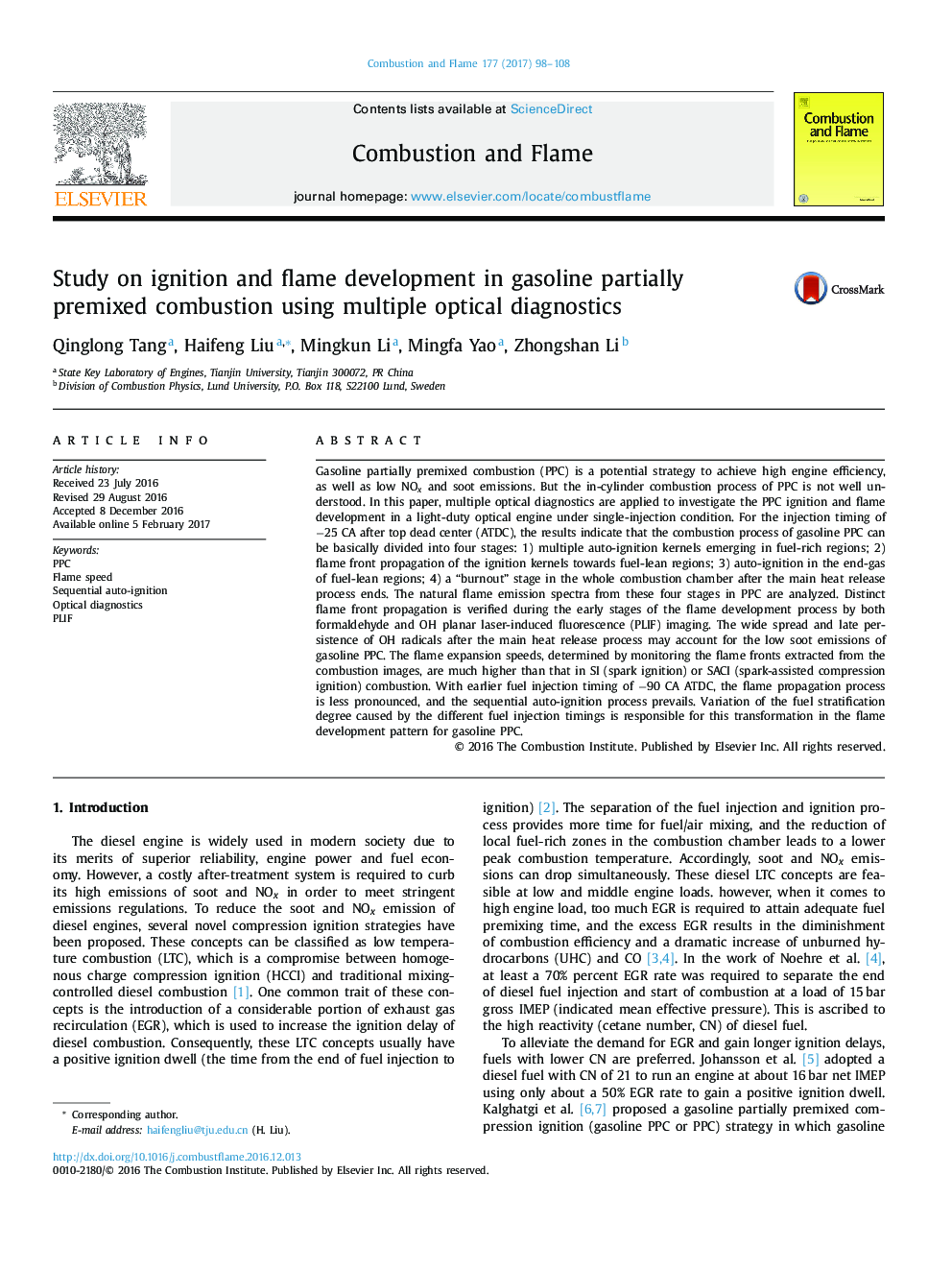| Article ID | Journal | Published Year | Pages | File Type |
|---|---|---|---|---|
| 6468537 | Combustion and Flame | 2017 | 11 Pages |
Gasoline partially premixed combustion (PPC) is a potential strategy to achieve high engine efficiency, as well as low NOx and soot emissions. But the in-cylinder combustion process of PPC is not well understood. In this paper, multiple optical diagnostics are applied to investigate the PPC ignition and flame development in a light-duty optical engine under single-injection condition. For the injection timing of â25 CA after top dead center (ATDC), the results indicate that the combustion process of gasoline PPC can be basically divided into four stages: 1) multiple auto-ignition kernels emerging in fuel-rich regions; 2) flame front propagation of the ignition kernels towards fuel-lean regions; 3) auto-ignition in the end-gas of fuel-lean regions; 4) a “burnout” stage in the whole combustion chamber after the main heat release process ends. The natural flame emission spectra from these four stages in PPC are analyzed. Distinct flame front propagation is verified during the early stages of the flame development process by both formaldehyde and OH planar laser-induced fluorescence (PLIF) imaging. The wide spread and late persistence of OH radicals after the main heat release process may account for the low soot emissions of gasoline PPC. The flame expansion speeds, determined by monitoring the flame fronts extracted from the combustion images, are much higher than that in SI (spark ignition) or SACI (spark-assisted compression ignition) combustion. With earlier fuel injection timing of â90 CA ATDC, the flame propagation process is less pronounced, and the sequential auto-ignition process prevails. Variation of the fuel stratification degree caused by the different fuel injection timings is responsible for this transformation in the flame development pattern for gasoline PPC.
